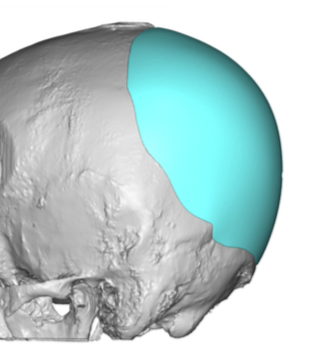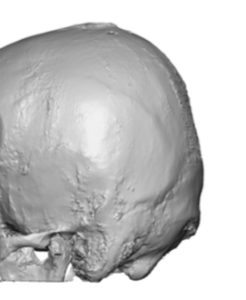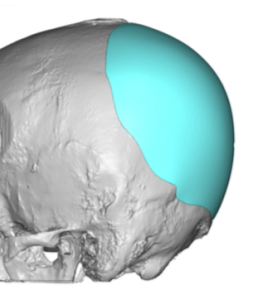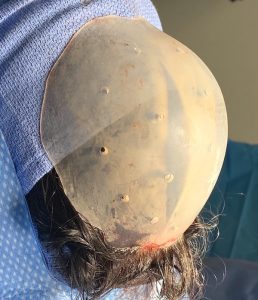Background: One of the most common aesthetic skull deformities is a flat back of the head. Such flatness can occur in a variety of ways of which the most common is when it affects just one side. (plagiocephaly) The other type of flatness is when it affects both sides, technically known as brachycephaly. Although in the aesthetic variety the extent of the brachycephaly is less severe than in the more severe congenital or craniosynostotic type.
While both men and women can be affected by a flat back of the head, men may more frequently seek treatment for it due to greater visibility. With short hair or a shaved head men have no ability to camouflage a ‘missing’ part of the skull that looks cuts off in profile view. Some men may want to augment the back of their flat head because they have some hair but want to shave their head or cut their hair very short because it is thinning. In more rare cases some men with full or thick hair want to augment the back of their head because it feels flat or are concerned what it looks like when wet.
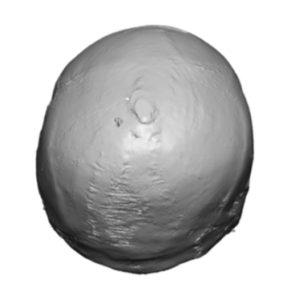
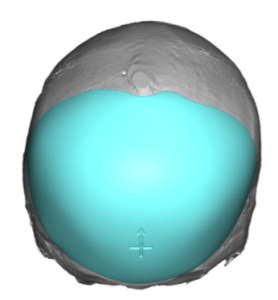
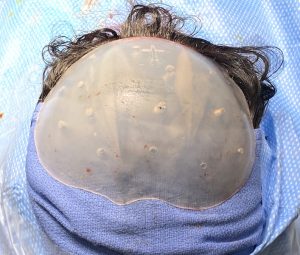
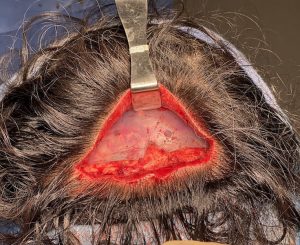
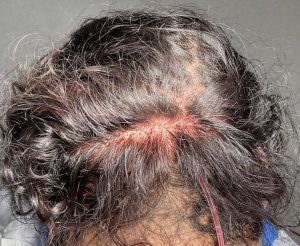
The key to a successful back of the head skull implant is affected by four factors: 1) implant shape, 2) implant volume, 3) incisional location and length and 4) the ability to get the implant successfully passed through the incision and properly positioned on the bone.
Case Highlights:
1) A flat back of the head is most commonly seen in men with short hair or shaved heads but those with hair can be also bothered by it.
2) As a good guideline in back of head skull implant design, the maximum volume should be in the 150cc range and no more than 13 to 14mm maximum central projection.
3) The back of head skull implant can be placed through a low horizontal scalp incision that does not require any shaving of hair.
Dr. Barry Eppley
Indianapolis, Indiana

